De Achttiende Eeuw. Jaargang 44
(2012)– [tijdschrift] Documentatieblad werkgroep Achttiende eeuw–
[pagina 177]
| |||||||||||||||||||
Outsiders on the inside
| |||||||||||||||||||
IntroductionWithin current scholarly debate it has become almost a cliché to state that there is no such thing as the Enlightenment.Ga naar voetnoot1 Time and again, students of the Enlightenment make it clear that their topic of research is multifaceted and culturally dynamic, and cannot be reduced to any single meaning or ideology.Ga naar voetnoot2 We know a radical Enlightenment, a moderate Enlightenment, a religious Enlightenment, and many more. And still we keep asking ourselves questions about centre and periphery in the Enlightenment, or the relationship between the Enlightenment and this or that issue, as if this term had a single meaning. A complicating factor is that the Enlightenment promotes a critical attitude towards all existing knowledge, including the knowledge produced by other Enlightened thinkers.Ga naar voetnoot3 Thus, a person criticizing certain supposedly Enlightened conceptions, like equality or tolerance, is not necessarily a critic of the Enlightenment as such. Moreover, posing as an independent individual increasingly becomes an ideal for authors and scholars alike through the course of the eighteenth century, when notions of singularity and (artistic | |||||||||||||||||||
[pagina 178]
| |||||||||||||||||||
and intellectual) autonomy are starting to gain influence within the public domain.Ga naar voetnoot4 This second tendency even further complicates the matter of what the Enlightenment entails and who was at the centre and who on the periphery of the debate. The Dutch navy physician Pieter van Woensel (1747-1808) nicely illustrates this complex relationship between centre en periphery within the context of the Enlightenment. As a navy physician, he makes various travels across the globe and spends many years of his life outside the Dutch Republic, mainly in Russia and the Ottoman Empire. These circumstances make him feel like a foreigner in his own country. They also cause him to be someone who is not afraid to foul his own nest, and criticize his fellow countrymen when he deems it necessary. Van Woensel left us a small yet interesting body of texts, consisting of some medical disputations, a few political pamphlets, a large two-volume travelogue and five installments of a satirical almanac, named De Lantaarn (The Lantern). Also, he published a translation of Cervantes' Don Quixote in 1802. In all his work he employs a distinct ironic and associative style of writing, which calls to mind the works of British authors like Jonathan Swift and Laurence Sterne.Ga naar voetnoot5 Van Woensel's take on the Enlightenment evokes just the problem I discussed above. He is deeply embedded in Enlightenment thought, refers to John Locke, David Hume and Voltaire, and takes a tolerant, almost libertarian stance when it comes to moral and religious issues.Ga naar voetnoot6 But he also mocks the entire notion of bringing progress to society by spreading Enlightenment thought among its members, and the idea that through the implementation of Enlightenment values in society we are now wiser and more rational than we were before.Ga naar voetnoot7 In this respect, Van Woensel seems rather skeptical about the Enlightenment project as such. In general, he likes to emphasize his individuality and independence as a public figure. For example he writes: ‘Mine is the singularity’,Ga naar voetnoot8 and places as a motto on every installment of his satirical almanac these biblical verses from 1 Thessalonians 2: ‘For neither at any time used we flattering words, as ye know, nor a cloke of covetousness [...] | |||||||||||||||||||
[pagina 179]
| |||||||||||||||||||
Nor of men sought we glory, neither of you, nor yet of others’.Ga naar voetnoot9 He can thus also be considered as a follower of the eighteenth-century tendency towards independence and individuality. In this article I will analyze Van Woensel's complex relationship with the Enlightenment. Through this analysis, I also hope to shed some light on the more general issue of centre and periphery in the Enlightenment. André Hanou, a great expert on the (Dutch) eighteenth century, once called Van Woensel ‘independently Enlightened’.Ga naar voetnoot10 I want to suggest here that, although this characterization is not necessarily false, it fails to notice Van Woensel's connections to some broader developments within eighteenth-century literature and culture. These connections show him to be a representative of what I would like to call the eccentric Enlightenment. | |||||||||||||||||||
Eccentric traditionsAt first glance, eccentricity seems to be a common trait of eighteenth-century Dutch authors. Hendrik Doedijns, Jacob Campo Weyerman and Franciscus Lievens Kersteman are just some examples of the various colorful figures that the Dutch eighteenth century has produced.Ga naar voetnoot11 Like Van Woensel, these authors employ an ironic and associative style of writing. They also share with Van Woensel their ambivalent attitude towards the (early) Enlightenment. Especially Doedijns writes extensively on this topic. He is responsible for what has come to be known as the first ‘real’ journal in the Dutch Republic, the Haegsche Mercurius (1697-1699), a weekly that was widely read among the coffee houses of The Hague, and in which the name of René Descartes figured prominently.Ga naar voetnoot12 A closer look shows us that there is also at least one important difference between the aforementioned figures and the case of Van Woensel. The eccentric reputation of authors like Weyerman and Kersteman is for a large part caused by the fact that they are hack writers.Ga naar voetnoot13 The professionalization of the Dutch | |||||||||||||||||||
[pagina 180]
| |||||||||||||||||||
literary field starts relatively late compared to other European countries.Ga naar voetnoot14 At least until the mid-eighteenth century commercial authorship has a very low status in the Dutch Republic, and persons who make their living out of writing are with no exception social outcasts. It is telling, in this light, that both Weyerman and Kersteman spent part of their life in jail.Ga naar voetnoot15 Their eccentricity is thus in the first place a product of the severe social circumstances they lived in. Van Woensel is not a hack. His main profession is medicine. Writing forms more of a side-line for him, as can be derived from his rather small track-record as an author. Apart from that, he publishes his work at a time when the negative view on commercial authorship slowly starts to lose ground in the Netherlands. The well-known female novelists Betje Wolff and Aagje Deken, whose works were published in the 1780s and 1790s, belong to the first generation of Dutch authors that make their living out of writing without having to pay the price of social marginalization.Ga naar voetnoot16 This change of circumstances has a considerable influence on what it means when an author shows himself to be eccentric. From this point on, acting like an oddball starts to become more of an ideological choice instead of the almost inevitable consequence of the author being a hack writer. Authors, like Van Woensel, who make this choice place themselves in a tradition that I would like to coin that of ‘the outsider on the inside’. The outsider on the inside is a figure who tries to distance himself from the mainstream cultural discourse of his age, and does so by posing as an eccentric. Meanwhile, he is obviously part of the cultural discourse he wants to distance himself from, and eccentricity in this respect is mainly an intellectual strategy, used by the author to create an independent, autonomous space for himself within the public domain, a space that offers him the opportunity to say and do whatever he wants.Ga naar voetnoot17 His eccentricity is paradoxical, because he acts like an outsider, where in fact he is an insider, in the sense that he is generally acknowledged by the audience and his peers as a representative of high culture. Good examples of this type of outsider on the inside from our own time are the French novelist Michel Houllebecq and the Dutch author and journalist Arnon | |||||||||||||||||||
[pagina 181]
| |||||||||||||||||||
Grunberg. Authors like Weyerman and Kersteman cannot be counted as part of this tradition, because they are ‘real’ outsiders, whose eccentricity is at least not mere strategy, and perhaps not strategic at all. The Swiss-French philosopher Jean-Jacques Rousseau can be seen as one of the foremost propagators of this tradition of outsiders on the inside in the eighteenth century.Ga naar voetnoot18 On the one hand, he is deeply involved in the intellectual discourse of his age. In the early 1740s, he comes to Paris and enters the world of the philosophes, several of whom he comes to know personally.Ga naar voetnoot19 Later in his life, however, he distances himself sharply from this world and starts to pose as an opponent of the ‘high’ French Enlightenment.Ga naar voetnoot20 By behaving as such, he becomes the typical outsider on the inside. He also evokes his eccentricity by wearing an exotic dress in public, consisting of an Armenian caftan and fur cap. This dress makes him look ‘differently’ in the eyes of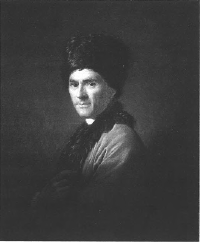 Fig. 1: Portrait of Jean-Jacques Rousseau. Made in 1766 by the Scottish painter Allan Ramsay. Oil on canvas (74.9 × 64.8 cm). Scottish National Gallery.
his contemporaries.Ga naar voetnoot21 Rousseau is depicted in his Armenian costume on a famous portrait of him from 1766, made by the Scottish painter Allan Ramsay [figure 1].Ga naar voetnoot22 Yet his main token of eccentricity is his Confessions, in which | |||||||||||||||||||
[pagina 182]
| |||||||||||||||||||
Rousseau lays bare his personality in a way that was unthinkable until then.Ga naar voetnoot23 He opens this series of books tellingly by declaring his ‘otherness’, saying that no one in the world is just like him.Ga naar voetnoot24 Rousseau probably is the most influential and famous figure in modern European history that functioned as an outsider on the inside. It is therefore tempting to present him as the founding father of this tradition. His paradoxical eccentricity, however, can be traced back as far as ancient Greece, to the philosophical school of Cynicism.Ga naar voetnoot25 This school was founded in the third century B.C. by Antisthenes and Diogenes of Sinope. In fact, Cynicism represents a lifestyle, more than a philosophical school in the traditional sense of the word. Characteristic of this lifestyle are the cherishing of a primitive, animal-like form of existence, and the objective to unmask false truths and social pretension.Ga naar voetnoot26 The famous anecdote of Diogenes, strolling across the central marketplace of Athens at broad daylight with a lantern in search of a (sincere) human being, forms an iconic evocation of the Cynical philosophical method, in which the unmasking of false truths mostly happens through an act of eccentric behavior by the Cynic, who with this behavior disorients and oftentimes also provokes his audience.Ga naar voetnoot27 Rousseau seems to have borrowed this method from the Cynics. At least his contemporaries recognized this classical borrowing, albeit mainly in a negative sense. Voltaire called Rousseau ‘an ape of Diogenes’.Ga naar voetnoot28 We are thus confronted here with a long standing intellectual tradition that has classical roots. In what follows, I will show how this tradition can be related to the Enlightenment, by discussing the Dutch ‘outsider on the inside’ Pieter van Woensel. | |||||||||||||||||||
A triumph of light?Van Woensel's satirical almanac De Lantaarn, of which five installments appeared between 1792 and 1801, forms the author's most outspokenly political work.Ga naar voetnoot29 The title of this series of booklets evokes a double meaning: it can be interpreted as a statement in favor of as well as against the Enlightenment. | |||||||||||||||||||
[pagina 183]
| |||||||||||||||||||
 Fig. 2: Cover page De Lantaarn voor 1792. Amsterdam University Library.
On the one hand, the lantern, also depicted as a frontispiece on the title page of every installment [figure 2], within the late eighteenth-century context can be viewed as a symbol of the triumph of Enlightened wisdom over the darkness of religious and political absolutism. In the wake of the French Revolution, the concept of light had become a widely distributed metaphor in word and image, with an evidently positive connotation. Within this metaphorical sphere, the lantern symbolically functioned as a means to spread the light of truth.Ga naar voetnoot30 In this sense, the lantern also functions in a satirical print that is included in the appendix to De Lantaarn voor 1800. In this picture we see a large lantern, placed 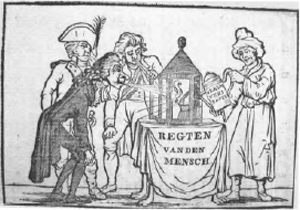 Fig. 3: Satirical print ‘Regten van de mensch’, appendix to De Lantaarn voor 1800. Amsterdam University Library.
| |||||||||||||||||||
[pagina 184]
| |||||||||||||||||||
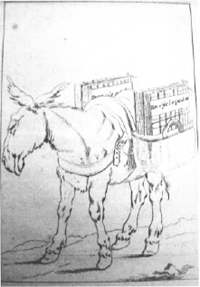 Fig. 4: Satirical print, De Lantaarn voor 1792. Amsterdam University Library.
on a table that is covered with a cloth on which the words ‘Rights of Man’ (in Dutch: ‘Regten van de mensch’) are written [figure 3]. On the left side of the table, three representatives of the Dutch ruling class try very hard to blow out the lamp that is burning inside the lantern. On the right side, a man dressed in a Turkish costume is replenishing the lamp's fuel, using ‘oleum veritatis’, which is veracity oil, to save it from dying out. The Turk here probably represents Van Woensel, who as I mentioned spent several years of his life in the Ottoman Empire, and wrote De Lantaarn under a Turkish pseudonym, Amurath-Effendi Hekim-Bachi, freely translatable as Mr. Amurath, surgeon general. In this print, we thus see Van Woensel, posing as a defender of the Enlightenment. Yet in other prints the author of De Lantaarn employs a somewhat more ambivalent stance towards the Enlightenment discourse. See for example his depiction of a donkey, laden with a multi-volume encyclopedia [figure 4]. The suggestion here is that the Enlightened triumph of wisdom and knowledge as represented by Diderot and D'Alembert's Encyclopédie, can be unmasked as dullness in disguise. In another picture, we see a donkey with a burning candle on its back and a monkey in a wig and formal dress standing next to it [figure 5]. The dressed up monkey is about to blow out the candle, while being watched by other, smaller monkeys, all of them undressed. At the forefront to the left, one is reading a book that states: ‘and we are still monkeys’ (in Dutch: ‘en wy zyn aapen gebleeven’). This print, issued in 1796, when the Batavian Republic had just started its democratic experiment with the election of a | |||||||||||||||||||
[pagina 185]
| |||||||||||||||||||
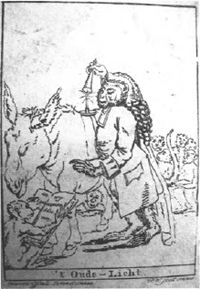 Fig. 5: Satirical print ‘And we are still monkeys’, De Lantaarn voor 1796. Amsterdam University Library.
National Assembly, following the political turnaround of January 1795, can be interpreted as a rather skeptical take on the Enlightenment's capacity to uplift the common people.Ga naar voetnoot31 Sure enough, this picture seems to say, the common man has political influence now, but he is still a monkey. These prints bring us to the second meaning of the lantern, namely that of a reference to Diogenes the Cynic, walking around with his lantern on the marketplace of Athens, trying to unmask false realities and insincere behavior. By picturing the Dutch revolutionaries as monkeys, Van Woensel can be said to expose the ‘true’ nature of the Enlightenment as he sees it. The title of his almanac, then, entails a critical inquiry into the issue of what the Enlightenment is actually worth rather than a celebration of the triumph of light over darkness, and the author shows himself to be a latter-day Diogenes. It is interesting in this respect that Van Woensel chose to use the almanac as his medium for this political satire. This medium has always had didactic connotations, but this was especially the case in the late eighteenth century, when it was seen as an instrument to enlighten the common man.Ga naar voetnoot32 Also interesting is the image of a crowing cock that Van Woensel places at the beginning of every installment of his Lantaarn [figure 6]. With this image he refers to the age-old use of the alert cock in textbooks as a symbolic incentive to pupils to | |||||||||||||||||||
[pagina 186]
| |||||||||||||||||||
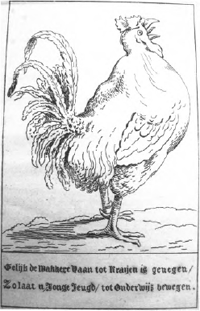 Fig. 6: ‘Gelijk de Wakkere Haan tot Krayen is genegen, Zo laat u Jonge Jeugd, tot Onderwijs bewegen’, De Lantaarn voor 1796. Amsterdam University Library.
pay attention at school and study well.Ga naar voetnoot33 Do these medial contexts turn Van Woensel into a sincere adherent of the Enlightenment after all? Perhaps, but his use of almanac and text book references could just as easily be read as a form of mockery, designed to criticize the pretentiousness of his fellow authors, who claim to enlighten the Dutch citizen through their educational literature.Ga naar voetnoot34 In that case, Van Woensel's choice of medium again positions him as a critic rather than a follower of the Enlightenment. | |||||||||||||||||||
The Dutch RousseauIt will be clear by now that, based on the texts and images in De Lantaarn, Van Woensel presents himself to us as an ambivalent character, whose complex relationship to the Enlightenment shows resemblances to that of Jean-Jacques Rousseau.Ga naar voetnoot35 In this respect, it does not come as a surprise that in the only known portrait of Van Woensel, an engraving by Pieter Wagenaar from 1791, he is wearing a fur coat and fur cap [figure 7]. Rumors have it that Van Woensel | |||||||||||||||||||
[pagina 187]
| |||||||||||||||||||
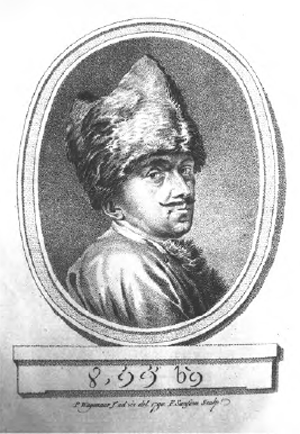 Fig. 7: Portrait of Pieter Van Woensel. Engraving by F. Sansom, original drawing made by Pieter Wagenaar, 1791. Amsterdam University Library
also wore this exotic dress in public.Ga naar voetnoot36 Van Woensel's portrait shows a striking resemblance to that of Rousseau in his Armenian dress. With it, the author of De Lantaarn seems to present himself as a Dutch Rousseau. He also does so by adopting the Turkish name of Amurath-Effendi Hekim-Bachi, with which he distances himself from the Dutch intellectual community, just as Rousseau distances himself from the Paris circle of philosophes by referring to himself as a ‘citoyen de Genève’ in his writings.Ga naar voetnoot37 The Ottoman Dr. Amurath can be seen as a persona used by Van Woensel to establish his authorial identity. This persona is ambivalent, especially when it comes to his self-image. Dr. Amurath is both arrogant and modest. In the introduction to the second installment, he claims that he only wrote this work for his own benefit, explicitly countering the tendency of his colleagues to write for the general good. Where they intend to educate the Dutch youth or citizen and to foster morality, he states that he only published this almanac to make some money and chase away his boredom.Ga naar voetnoot38 Through this statement he associates himself with the condemned practice of hack-writing.Ga naar voetnoot39 He also | |||||||||||||||||||
[pagina 188]
| |||||||||||||||||||
downplays his competence as a writer and a scholar several times, by calling himself a dunce (‘brekebeen’ in Dutch) and his writings ‘of little importance’.Ga naar voetnoot40 At the same time, however, Dr. Amurath prides himself on being singular, and states that he would rather depart from ‘the privileged route’ and run the risk of ‘selling’ ‘heretical goods’, than bore others and himself with orthodoxy. ‘A pleasant new error is more welcome to me than a faded truth’, or so he says.Ga naar voetnoot41 These statements give the impression that Amurath sees his eccentricity as an altogether positive attitude, that maybe even places him on a higher level than those who walk the straight line. With this ambivalent self-presentation, Van Woensel shows himself to be a follower of the tradition of the outsider on the inside that I sketched above. He can be seen as both a new Diogenes and a new Rousseau. Just like Diogenes, the author of De Lantaarn is not afraid to upset his readership if he thinks that will bring us closer to the truth, and like Rousseau he turns his ‘otherness’ into a central token of his public image. Within the Dutch situation, Van Woensel seems to be one of the first to adopt this tradition. Together with Rousseau, he can also be viewed as a representative of the eccentric Enlightenment, which can be defined as the current of thought that does not reject the Enlightenment project as a whole, but takes a rather critical stance towards the more dogmatic and ideological interpretation that was given to this movement in the last decades of the eighteenth century. | |||||||||||||||||||
ConclusionVoltaire is quoted as stating ‘Think for yourself and let others enjoy the privilege to do so, too’. This incentive, as I see it, points to a paradox that lies at the heart of the Enlightenment as a historical movement, namely that it is focused on the emancipation of the individual mind, and thus encourages a critical, independent attitude towards all existing knowledge, including other Enlightened philosophies. Being independent and Enlightened is, in this sense, a pleonasm. And, following this line of interpretation, posing as an outsider on the inside seems like a very Enlightened thing to do, even though this attitude can already be found with the classical Cynics. That makes Van Woensel and others who follow the same path much more central to the Enlightenment debate than they appear to be. They represent the eccentric Enlightenment, | |||||||||||||||||||
[pagina 189]
| |||||||||||||||||||
which, together with the radical Enlightenment, the moderate Enlightenment and all the other Enlightenments, constitute the concept of Enlightenment as a comprehensive phenomenon. With his ironic tone of voice, ambivalent self-image and overall attempt to appear as an oddball in the eyes of the public, Pieter van Woensel at first seems to be nothing more than a curiosity, one of the many colorful figures that the eighteenth century has left us. It has been my intention to argue here that he stands for a position within the public domain that actually matters. He is an outsider on the inside. His eccentricity is largely a pose, his stance towards the Enlightenment ambivalent. As such, his case forms a valuable source of insight for both students of the Enlightenment and cultural historians in general, that helps us better understand our ancestors' continuous shaping and re-shaping of the culture and society they were part of. | |||||||||||||||||||
About the authorIvo Nieuwenhuis is currently writing a PhD dissertation on late eighteenth-century Dutch satire at the University of Amsterdam, which is due to be finished by mid-2013. He received his academic education at Utrecht University, where he graduated in 2008, in the field of early modern Dutch literature. In the recent past, Ivo worked as a lecturer in Language and Cultural Studies at the same university. He has also published several articles on the topic of his dissertation. As of 2013, he is a board member of the Dutch-Belgian Society for Eighteenth-Century Studies. E-mail: i.b.nieuwenhuis@uva.nl. | |||||||||||||||||||
Bibliography
| |||||||||||||||||||
[pagina 190]
| |||||||||||||||||||
| |||||||||||||||||||
[pagina 191]
| |||||||||||||||||||
|
|

